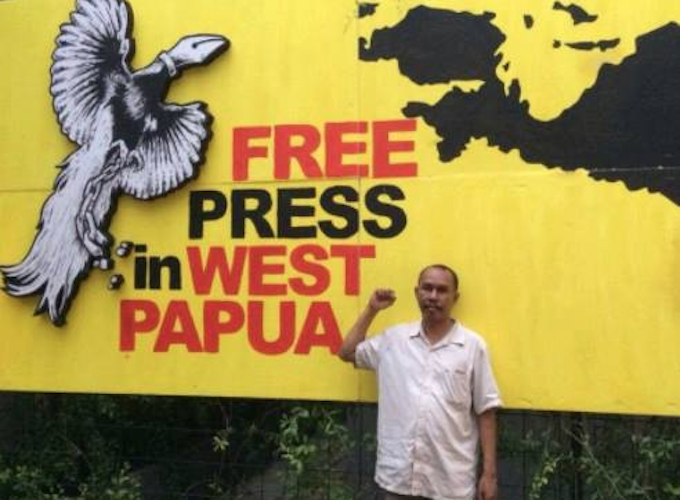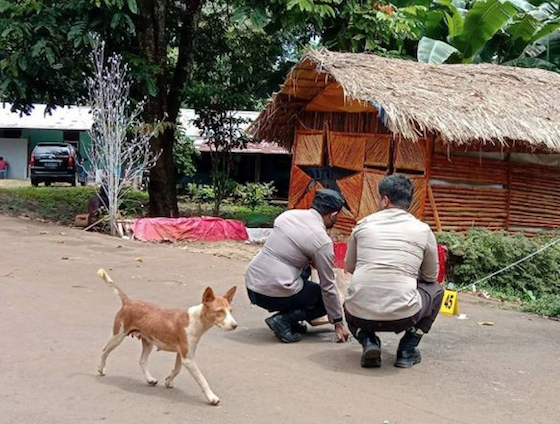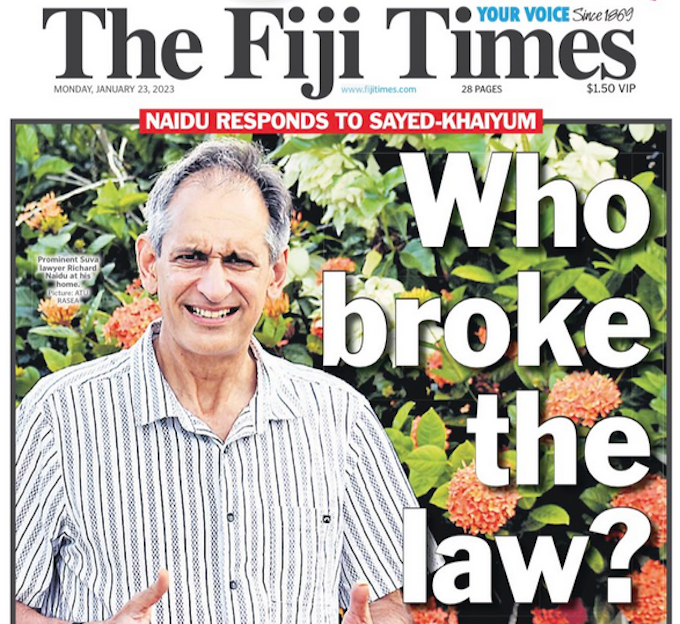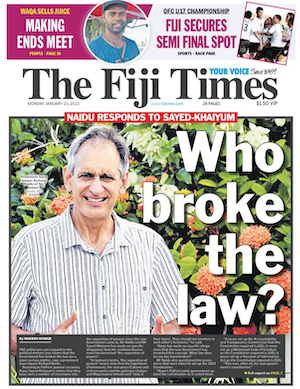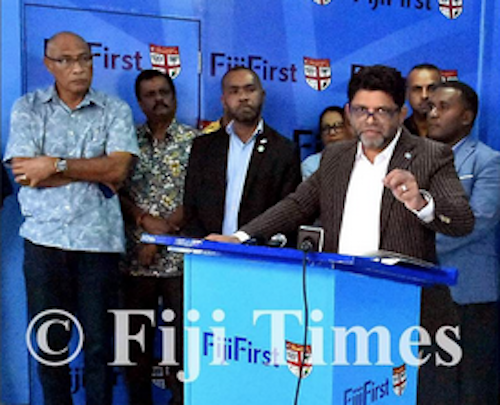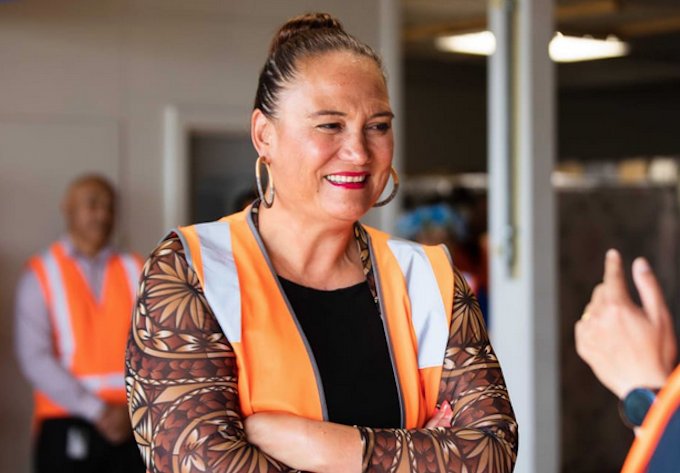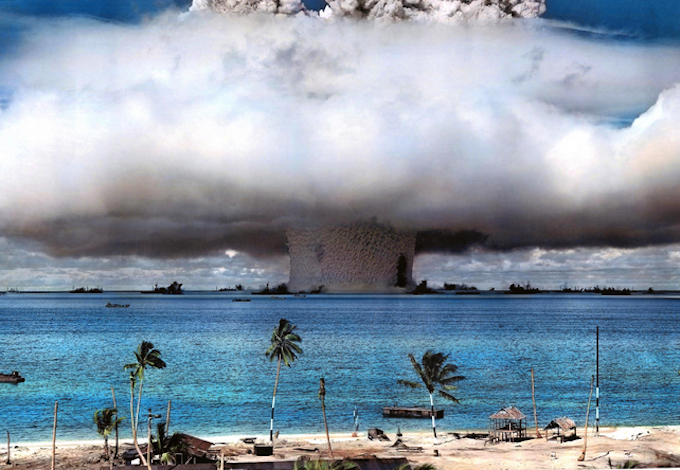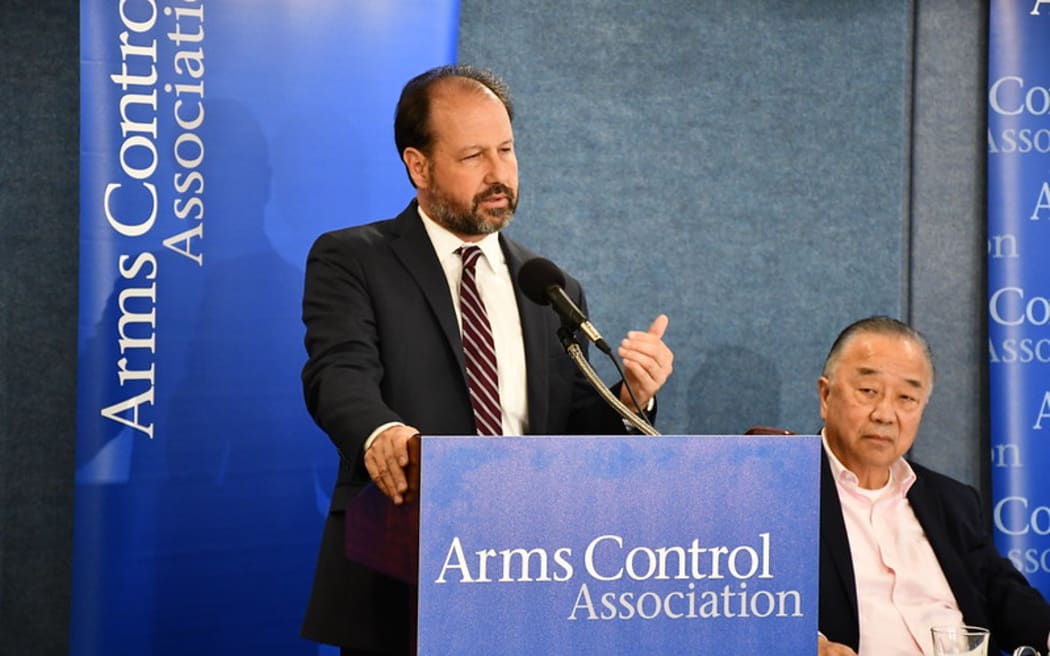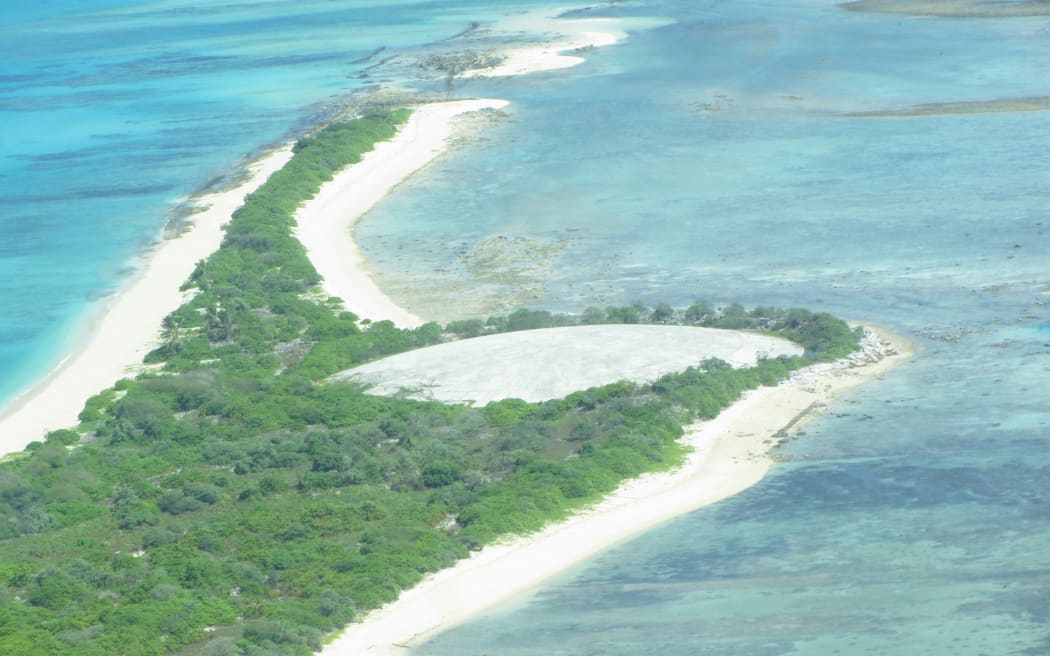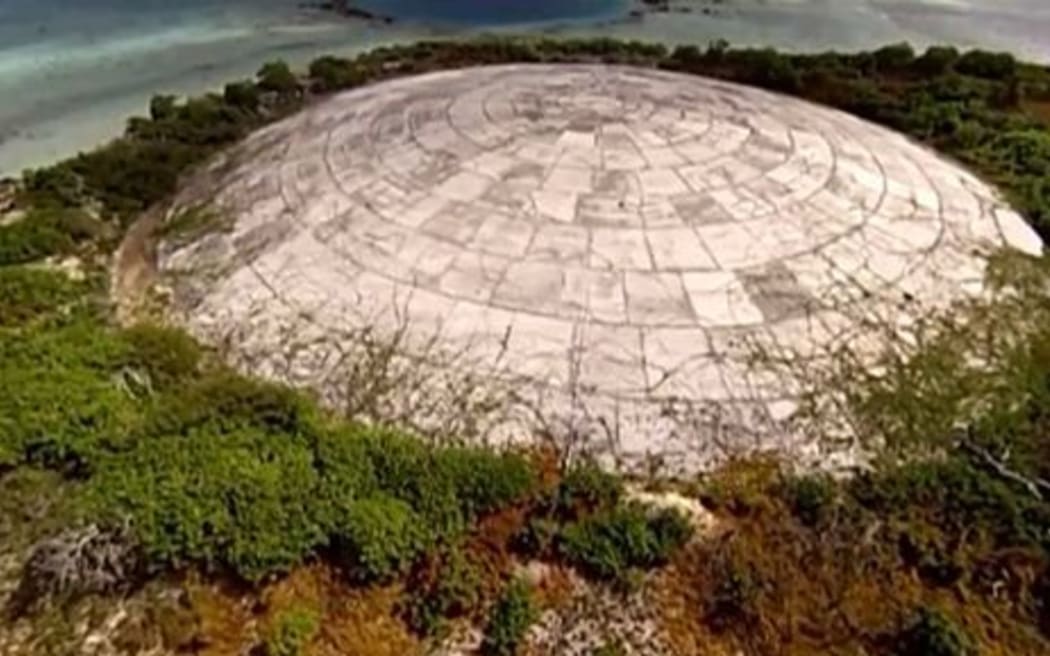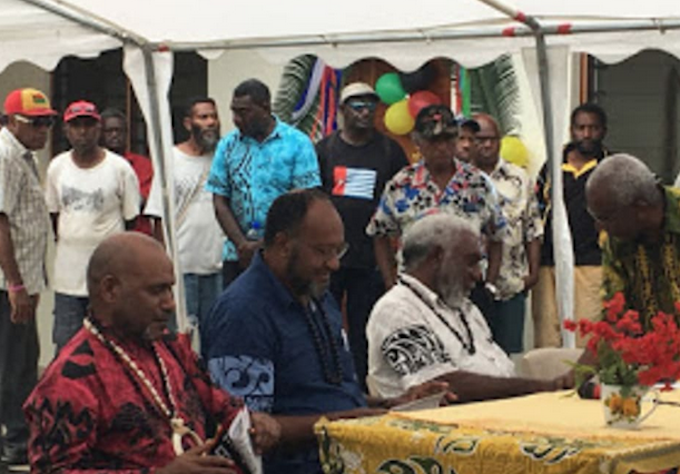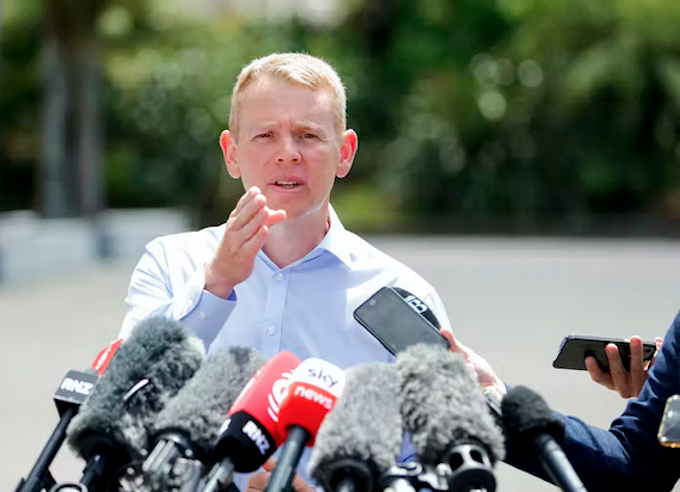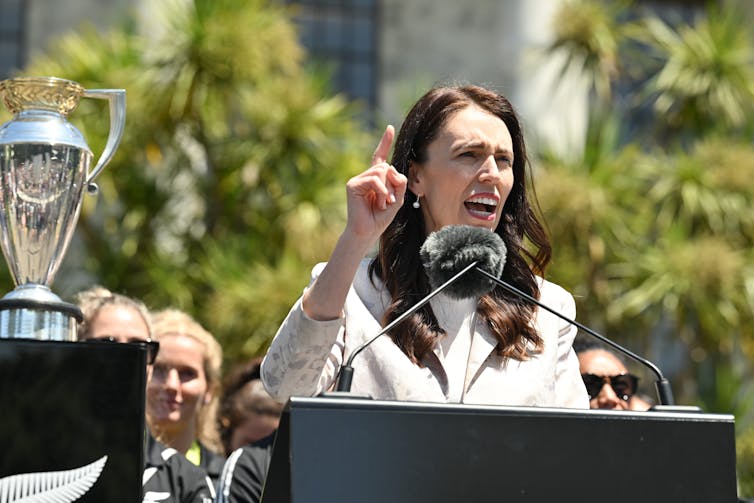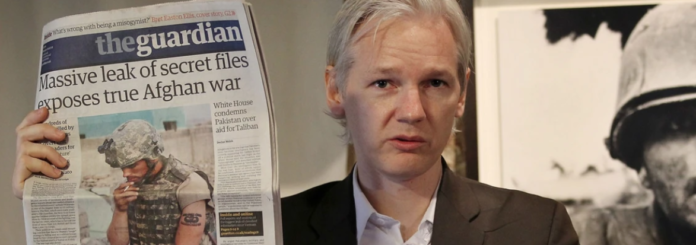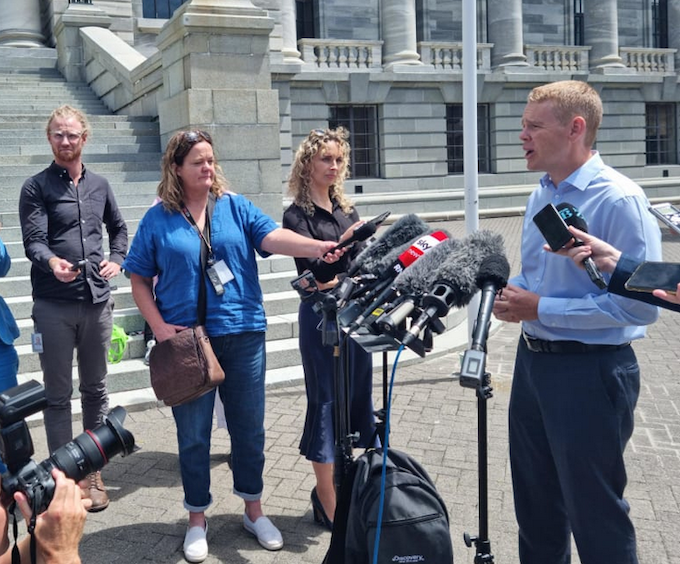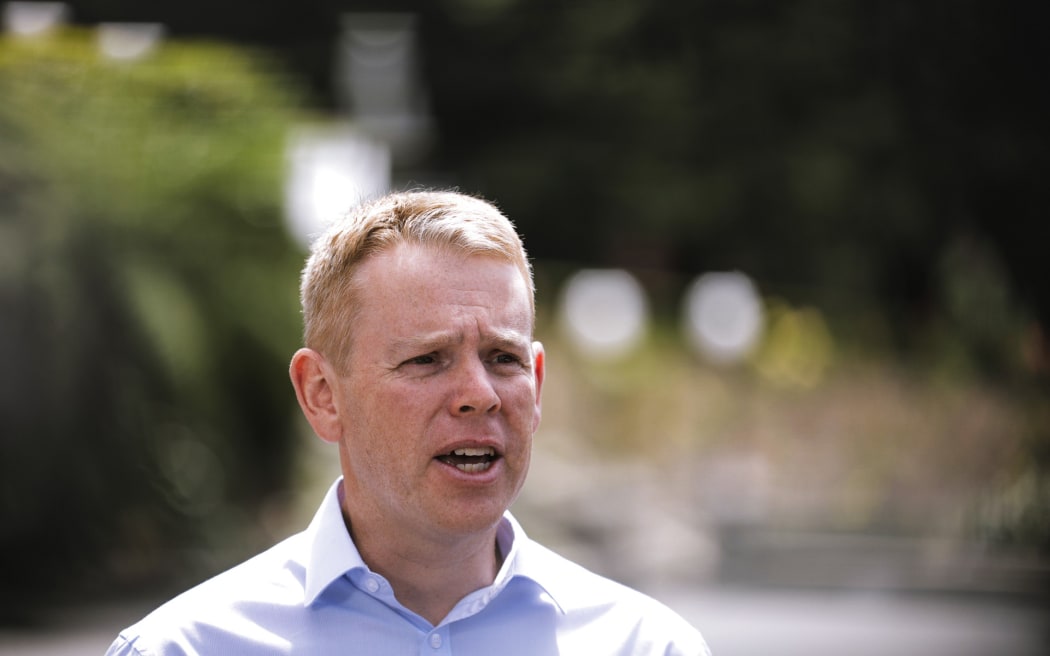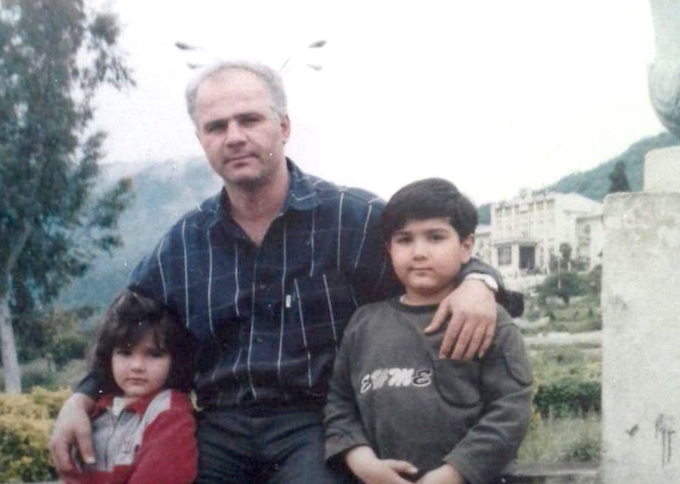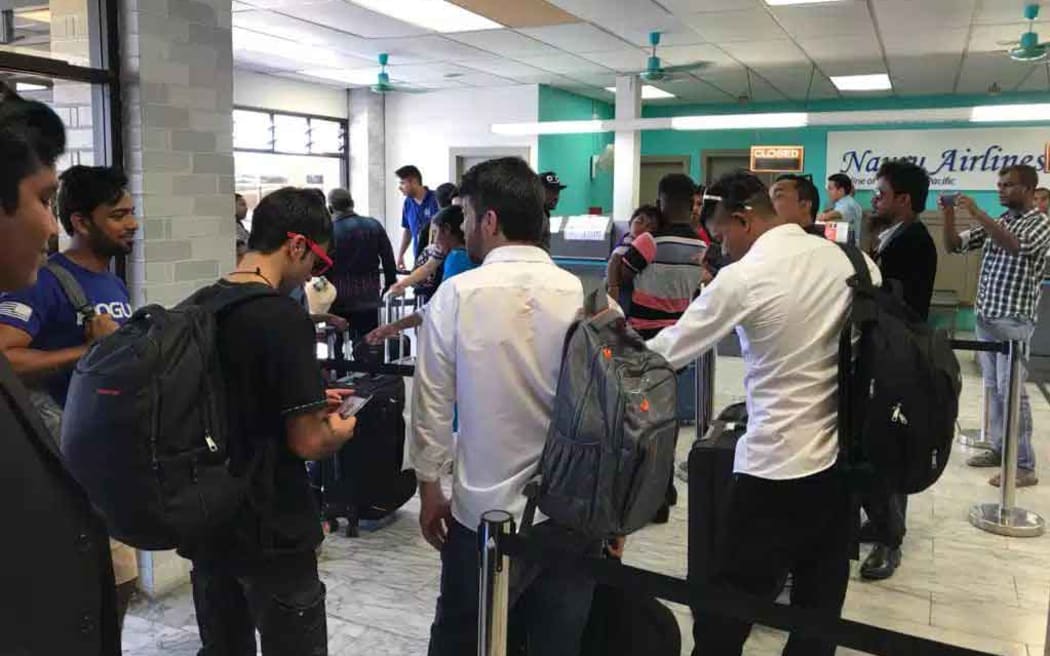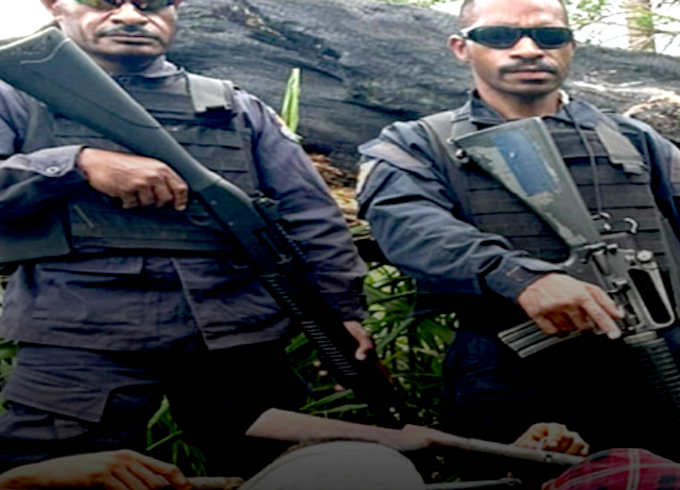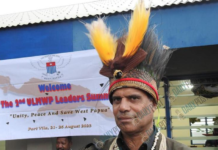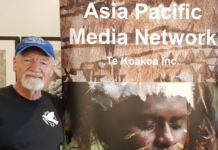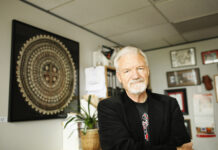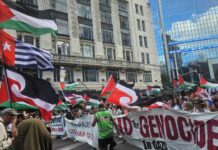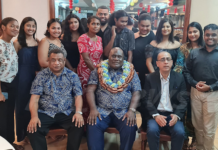By Dandy Koswaraputra and Pizaro Gozali Idrus
A veteran journalist known for covering rights abuses in Indonesia’s militarised Papua region says a bomb exploded outside his home yesterday and a journalists group has called it an act of “intimidation” threatening press freedom.
No one was injured in the blast near his home in the provincial capital Jayapura, said Victor Mambor, editor of Papua’s leading news website Jubi, who visited New Zealand in 2014.
Police said they were investigating the explosion and that no one had yet claimed responsibility.
- READ MORE: Tabloid Jubi journalist Victor Mambor ‘terrorised’ over Papua reports
- Papuan journalist Victor Mambor wins Udin Award for ‘dedicated journalism’
- Other Victor Mambor reports
“Yes, someone threw a bomb,” Papua Police spokesperson Ignatius Benny told Benar News. “The motive and perpetrators are unknown.”
The Jayapura branch of the Alliance of Independent Journalists (AJI) condemned the explosion as a “terrorist bombing”.
In Sydney, the Australia West Papua Association (AWPA) and Pacific Media Watch in New Zealand protested over the incident and called for a full investigation.
Mambor said he heard the sound of a motorcycle at about 4 am and then an explosion about a minute later.
‘Shook like earthquake’
“It was so loud that my house shook like there was an earthquake,” he told Benar News as reported by Radio Free Asia.
“I also checked the source of the explosion and smelt sulfur coming from the side of the house.”
The explosion left a hole in the road, he said.
The incident was not the first to occur outside Mambor’s home. In April 2021, windows were smashed and paint sprayed on his car in the middle of the night.
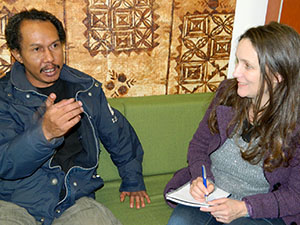
Mambor is also an advocate for press freedom in Papua. In that role, he has criticised Jakarta’s restrictions on the media in Papua, as well as its other policies in his troubled home province.
The AJI awarded Mambor its press freedom award in August 2022, saying that through Jubi, “Victor brings more voices from Papua, amid domination of information that is biased, one-sided and discriminatory.”
“AJI in Jayapura strongly condemns the terrorist bombing and considers this an act of intimidation that threatens press freedom in Papua,” it said in a statement.
‘Voice the truth’ call
“AJI Jayapura calls on all journalists in the land of Papua to continue to voice the truth despite obstacles. Justice should be upheld even though the sky is falling,” said AJI chair Lucky Ireeuw.
Amnesty International Indonesia urged the police to find those responsible.
“The police must thoroughly investigate this incident, because this is not the first time … meaning there was an omission that made the perpetrators feel free to do it again, to intimidate and threaten journalists,” Amnesty’s campaign manager in Indonesia, Nurina Savitri, told BenarNews.
The Papua region, located at the eastern end of the Indonesian archipelago, has been the site of a decades-old pro-independence insurgency where both government security forces and rebels have been accused of committing atrocities against civilians.
Foreign journalists have been largely barred from the area, with the government insisting it could not guarantee their safety. Indonesian journalists allege that officials make their work difficult by refusing to provide information.
The armed elements of the independence movement have stepped up lethal attacks on Indonesian security forces, civilians and targets such as construction of a trans-Papua highway that would make the Papuan highlands more accessible.
Human Rights Watch, meanwhile, has accused Indonesian security forces of intimidation, arbitrary arrests, torture, extrajudicial killings and mass forced displacement in Papua.
Security forces kill 36
Last month, Indonesian activist group KontraS said 36 people were killed by security forces and pro-independence rebels in the Papua and West Papua provinces in 2022, an increase from 28 in 2021.
In Sydney, Joe Collins of the AWPA said in a statement: “These acts of intimidation against local journalists in West Papua threaten freedom of the press.
“It is the local media in West Papua that first report on human rights abuses and local journalists are crucial in reporting information on what is happening in West Papua”.
Collins said Canberra remained silent on the issue — ‘the Australian government is very selective in who it criticises over their human rights record.”
There was no problem raising concerns about China or Russia over their record, “but Canberra seems to have great difficulty in raising the human rights abuses in West Papua with Jakarta.”
Republished from Radio Free Asia with additional reporting by Pacific Media Watch.
